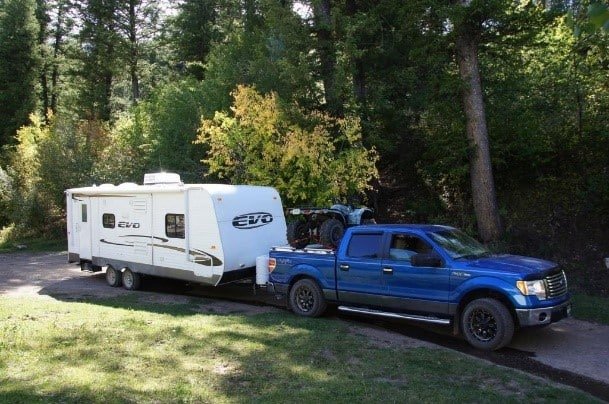Truck payload and towing capacity—you’ve probably heard these two phrases at some point. Maybe an advertisement for a new Ford Super Duty F-250? Or when a salesman told you the towing capacity of a truck. These two concepts are so common that understandably, many drivers think they mean the same thing. In reality, they’re quite different. Using them interchangeably could even
Read on to get a better understanding of these truck terms and why it is necessary that you know the difference between the two.
Truck Payload and Towing Capacity Defined
Understanding towing capacity isn’t tricky. The meaning of the 2 phrases can be drawn from looking a little deeper at the two individual words.

Truck Payload: Truck payload is all about carrying. Not carrying behind, but carrying inside. Payload refers to the weight of all the extra stuff you might pile into your vehicle or its bed. Whether it’s 500 lbs. of junk you’ve thrown in the backs or the weight of your buddy in the passenger’s seat, if it is inside and not behind the vehicle, we are talking about “Truck Payload”.
Towing Capacity: (pulling something behind) + capacity (max amount) = how much weight a truck can safely pull behind it.

Don’t forget, a trailer hitch has its own towing capacity (Hitch Class). This hitch is a triple ball mount with a hook. Photo: L Baures
Note: Pulling (behind) is the keyword with this definition.
What’s With the Mix-Up
The reason so many of us confuse the terms truck payload and truck towing capacity is that they are based on the same two things: the truck’s Gross Vehicle Weight Rating (GVWR), suspension, and how durable its frame is.
Also, the word carrying can make things confusing. Technically, when you are towing a load behind your truck, you are ‘carrying’ it. This is why it is important to remember that it is what is inside, not following, that payload refers to. Imagine a mother carrying her child in her arms versus pulling him behind her in a wagon. This is the difference between payload and towing.
Payload vs. Towing: Real Numbers
Going back to the Ford Super Duty mentioned above. Can you guess the towing capacity of this truck? 21,000 pounds. But what about the truck payload? This number comes in at just 3,550 pounds. Huge difference, right?
Payload vs. Towing makes sense when we go back to the “carry inside” versus “pull” explanation. A mother might have trouble carrying a 30-pound toddler in her arms for a long distance, but pulling him in a wagon wouldn’t be that difficult.
What Does It Matter?
Now that you know the difference, you might be asking, what does it matter? For starters, ignoring either the towing or payload capacity is one of the worst mistakes you can make. Both towing capacities and truck payload limits are set by manufacturers for a specific reason. Staying under the limit stops you from doing serious damage to your vehicle. If you don’t know these limits, how can you prevent these costly mistakes?

Finding your vehicle’s towing capacity is as simple as knowing the VIN. Payload limits can be calculated using simple math. You start with your vehicle’s gross weight rating. Then subtract the curb weight (how much it weighs on its own with nothing extra added). Check out the formula below:
Payload Capacity = Gross vehicle weight rating – curb weight
Voila! Now you know the difference between towing capacity and payload. As well as how much you can carry behind your truck and in its bed. Remember, your vehicle has these limits for a reason, so don’t exceed them.

Recent Comments